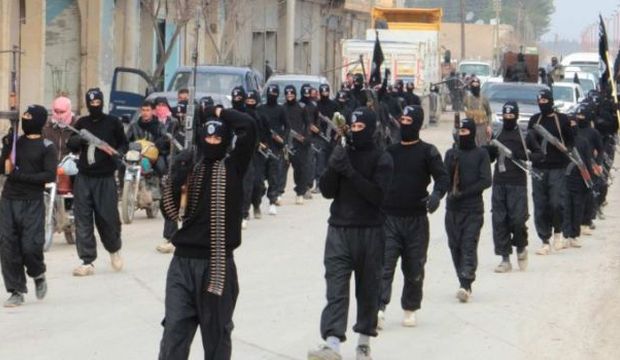When one looks at the Islamic State of Iraq and Syria (ISIS) it becomes clear that out of all the armed groups in Syria, it is by far the most important, the best funded, armed and organized, and possesses more members than any other. No other group carries out so many acts of violence and terror, not only against the Syrian people but also against the region and even beyond. In short, ISIS is one of the most prominent terrorist groups in the world right now.
This is a depressing but accurate assessment of the reality of the threat ISIS poses. However, it merits special attention not only because of its importance, but also because ISIS is incredibly dangerous as an armed group in Syria. In light of this fact, one can point to a clear political vacuum in Syria, as well as the many mistakes that have been committed in dealing with the problem of ISIS, and the Syrian crisis as a whole.
The most important information we have regarding ISIS is that this group grew and developed its presence in Iraq, expanding within a political, security and societal environment not available at that time in Syria, a country the organization did not enter until many years after it was founded. It was only a year ago, after the violent escalation of the Syrian conflict—that is, more than two and a half years after the start of the vicious campaign by the Syrian regime against its own people—that the group entered the country.
Another point to reflect upon is the part played by outgoing Iraqi Prime Minister Nuri Al-Maliki’s policies, which helped the group gain a foothold in Iraq. In 2013, ISIS carried out operations to free hundreds of former Al-Qaeda jihadists from prisons in Iraq, later easing their passage into Syria during the summer of that year, along with funds, weapons and ammunition, all of which in turn helped the group strengthen its foothold in Syria. There was intense intelligence activity at the time carried out by Iraqi intelligence, but also by international players such as Iran, Russia and Al-Qaeda itself, which helped direct thousands of extremists to Syria, who alongside their brothers from Iraq formed the core of ISIS and its leadership.
A study released in June suggested that no fewer than 12,000 foreign fighters from 81 countries had come to Syria to join the conflict since it began in 2011, most of them joining ISIS. The majority of these fighters are from Arab and Islamic countries, but among them are some 3,000 European citizens and 300 Americans.
This evidence contradicts the claims of the Syrian regime, and discredits the idea that the violence on the ground was the main driver of ISIS’s presence in Syria. In reality, the main factor here was political in nature, and melded with the aims of a regime that devoted all its power to achieve certain political ends and intensify the violence. All this coalesced with the policies of President Bashar Al-Assad’s regime against the Syrian people and their revolution as part of a two-sided mission, aided by ISIS in Syria. This could explain the ease with which the group’s leadership and its extremist members rolled into the country, their ability to quickly set up a strong organization there, and the fact they were not targeted by Assad’s forces. The regime may not have been so much as negligent here, as perhaps having reached some kind of “understanding” or “agreement” with ISIS, whether openly or behind the scenes. This is what explains the lack of air and rocket attacks by Syrian government forces on ISIS bases and fighters. To make the point even clearer: ISIS’s leadership and main bases in Syria are concentrated in the city of Raqqa.
The group’s foreign nature was no obstacle to its attempting to spread within Syria, infiltrating other armed Islamist groups such as the Ahrar Al-Sham and spreading in poor, disaffected areas lining the route between the rural areas of Deir Ezzor and Aleppo, passing through Raqqa. It exploited the dearth of weaponry and funding which some elements of the Free Syrian Army were suffering from, breaking them up and fighting others, while always subsequently creating an atmosphere of oppression and terror wherever it went, murdering residents of occupied areas in order to keep them quiet and under control. In this way, an “Al-Qaeda in Syria” was created, its presence and resources all no doubt directed against the Syrian people and their revolution in all those areas where the regime has lost control.
To conclude, regarding the matter of ISIS in Syria, we can say it is a purely “functional” organization, there to carry out a foreign agenda compatible with that of the Assad regime. The group’s role in Syria is akin to Hezbollah’s in Lebanon, or that of the armed militias in Iraq, only differing in the nature of the allegiances and the slogans, and what follows in terms of its actions. This means that the fight against ISIS runs parallel with the war against Assad and Hezbollah and the Iraqi militias. It is one war, one that cannot be divided up in any way: a war against both terror and extremism.
